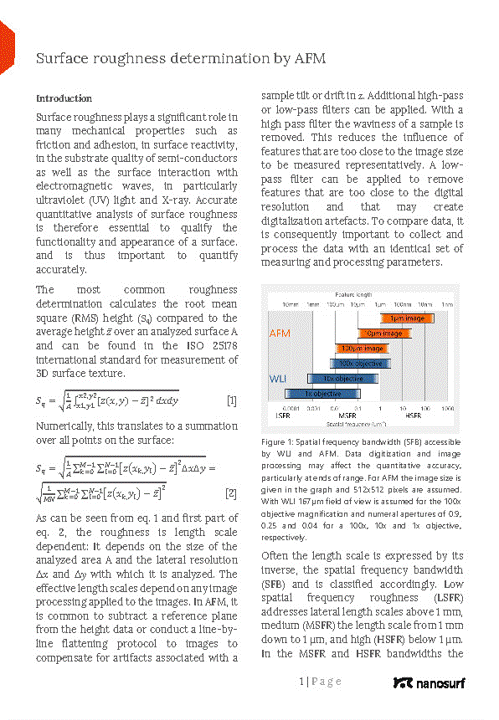Measuring the flattest surfaces in the Universe: roughness measurements with AFM
Surface roughness plays a significant role in many mechanical properties such as friction and adhesion, in surface reactivity, in the substrate quality of semi-conductors as well as the surface interaction with electromagnetic waves, in particularly ultraviolet (UV) light and X-ray.
Accurate quantitative analysis of surface roughness is therefore essential to qualify the functionality and appearance of a surface and is thus important to quantify accurately.
The AFM is uniquely suited to measure roughness accurately in the high spatial frequency range (HSFR) taking advantage of its high lateral and vertical resolution. With unparalleled resolution below 10 nm in the x and y-axis and <50 pm system noise in the z-axis, the AFM can measure 3D maps and roughness at the highest spatial frequency range below 100 pm. While multiple roughness parameters can be extracted from the data, the most common being the standard deviation of heights (Sq).
The AFM measurement is sufficiently accurately that the roughness can be corrected for the system noise. When comparing roughness values among images or samples, it is important to note that imaging parameters such as scan size and resolution are selected carefully and that the parameters are kept constant that govern the AFM tip-sample interaction. Finally, the noise floor of the AFM system must be well below the roughness of the sample, which is demanding for smooth samples.
Finally, to analyze samples with large dimensions or that are not flat, special stage designs are required that not only reach the desired system noise specifications, but also fulfill other requirements concerning safety or EUV compatibility.
